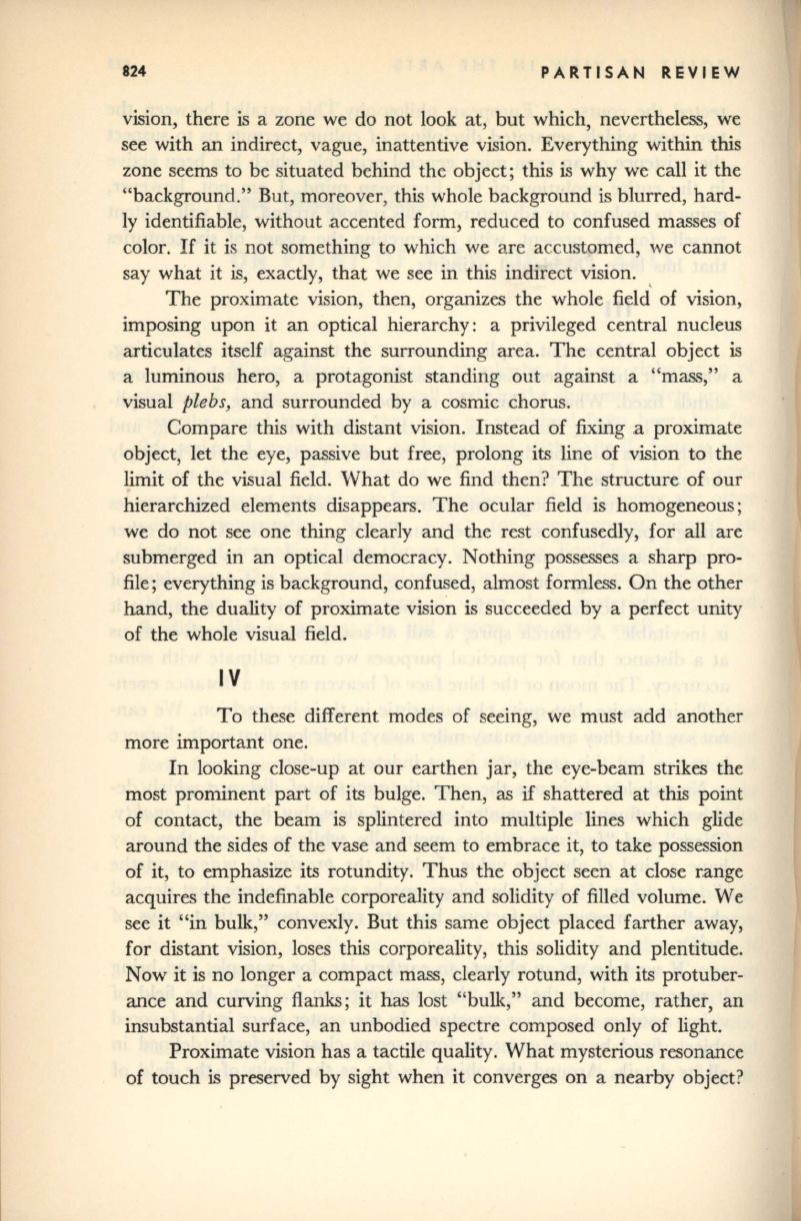
824
PARTISAN REVIEW
vision, there is a zone we do not look at, but which, nevertheless, we
see with an indirect, vague, inattentive vision. Everything within this
zone seems to be situated behind the object; this is why we call it the
"background." But, moreover, this whole background is blurred, hard–
ly identifiable, without accented form, reduced to confused masses of
color.
If
it is not something to which we are accustomed, we cannot
say what it is, exactly, that we see in this indirect vision. .
The proximate vision, then, organizes the whole field of vision,
imposing upon it an optical hierarchy: a privileged central nucleus
articulates itself against the surrounding area. The central object is
a luminous hero, a protagonist standing out against a "mass," a
visual
plebs,
and surrounded by a cosmic chorus.
Compare this with distant vision. Instead of fixing a proximate
object, let the eye, passive but free, prolong its line of vision to the
limit of the visual field . What do we find then? The structure of our
hierarchized elements disappears. The ocular field is homogeneous;
we do not see one thing clearly and the rest confusedly, for all are
submerged in an optical democracy. Nothing possesses a sharp pro–
file; everything is background, confused, almost formless. On the other
hand, the duality of proximate vision is succeeded by a perfect unity
of the whole visual field.
IV
To these different modes of seeing, we must add another
more important one.
In looking close-up at our earthen jar, the eye-beam strikes the
most prominent part of its bulge. Then, as if shattered at this point
of contact, the beam is splintered into multiple lines which glide
around the sides of the vase and seem to embrace it, to take possession
of it, to emphasize its rotundity. Thus the object seen at close range
acquires the indefinable corporeality and solidity of filled volume. We
see it "in bulk," convexly. But this same object placed farther away,
for distant vision, loses this corporeality, this solidity and plentitude.
Now it is no longer a compact mass, clearly rotund, with its protuber–
ance and curving
flanks;
it has lost "bulk," and become, rather, an
insubstantial surface, an unbodied spectre composed only of light.
Proximate vision has a tactile quality. What mysterious resonance
of touch is preserved by sight when it converges on a nearby object?


